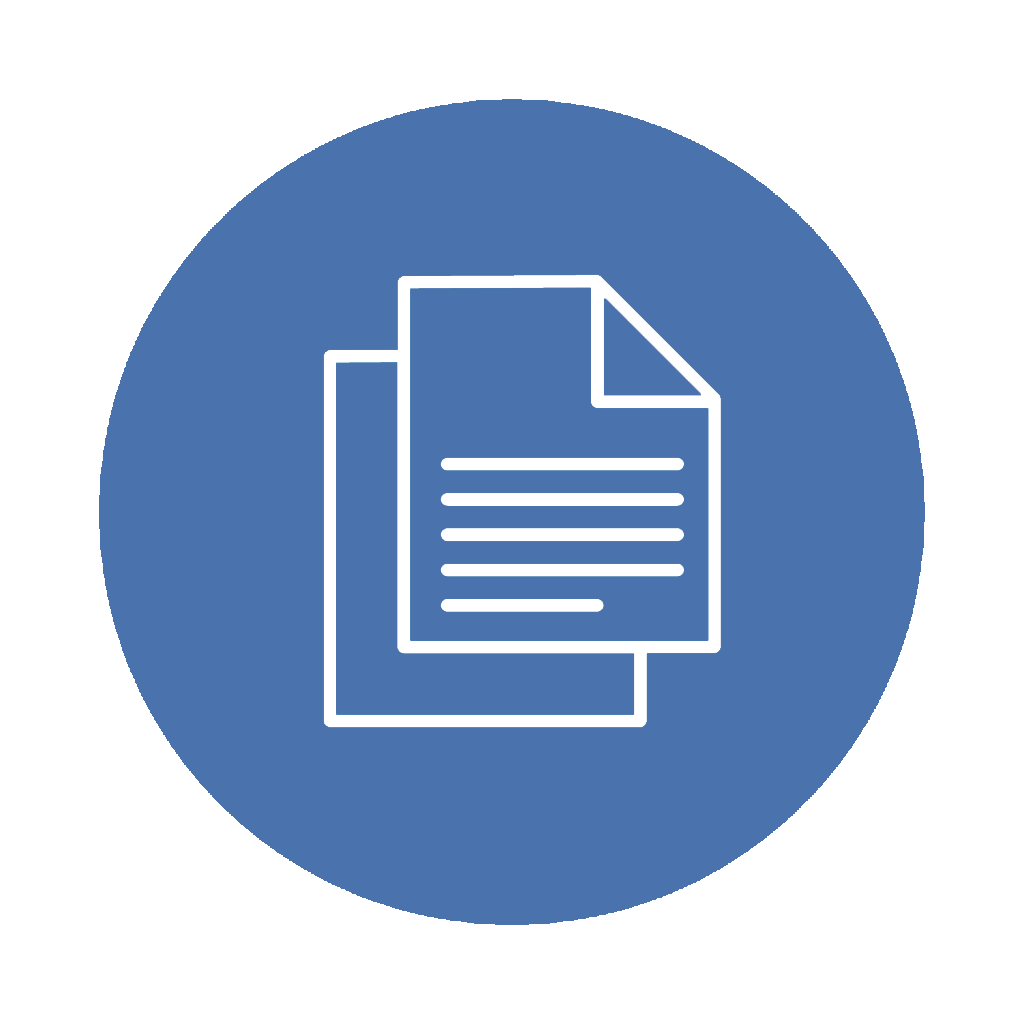07. Communicating and Reporting on IS Audits
07.02. Preparing the IS Audit Report

 Briefly reflect on the following before we begin:
Briefly reflect on the following before we begin:
- How can auditors write findings that are both clear and concise?
- How do auditors ensure their findings are wholly and accurately reported?
- In what ways do visual aids enhance the understanding of audit reports?
Audit reports culminate in auditing, serving as the formal record of findings, conclusions, and recommendations. They are critical tools for communication, providing a clear and concise account of the auditor’s observations and insights. They also inform decision-making, drive improvements, and serve as official records for accountability and transparency.
Thus, this section will break down the essential elements of a well-structured audit report. From the executive summary to the detailed findings and recommendations, each component plays a pivotal role in conveying the audit’s scope, methodology, findings, and implications. Next, we will explore the key traits required to articulate audit findings clearly and succinctly, which is crucial. This includes the techniques for distilling complex information into understandable and actionable points. We will also review how to avoid common pitfalls such as jargon, ambiguity, and over-complexity, which can obscure the report’s message.
In an era where data is abundant, the ability to visually represent audit findings can significantly enhance the report’s impact. We will discuss how to effectively use charts, graphs, and other visual tools to complement and clarify the textual content of their reports. Next, we delve into the critical considerations of the IS audit report finalization activities that focus on quality assurance practices to ensure the report’s accuracy, completeness, and overall quality. We will explore the relevant facets of this quality assurance review process, including internal peer review, quality control checks, and the finalization procedures.
Components of an IS Audit Report
The IS audit report is the culmination of the auditing process, representing the culmination of the auditor’s efforts to assess an organization’s information systems, controls, and procedures. It is the primary communication between the auditor and the organization’s stakeholders, providing an essential bridge between the audit findings and actionable recommendations. A comprehensive IS audit report is a multifaceted document that goes beyond merely presenting findings; it aims to deliver a complete and meaningful narrative that guides the organization toward improved security, compliance, and operational effectiveness.
Understanding these components is essential for auditors. Each component plays a unique role. Together, they form a comprehensive audit report.
IS Audit Report Components
- Title Page
- The first component is the title page. It provides basic report information. This includes the audit’s title, the company’s name, and the audit’s completion date. The title page sets the report’s tone. It’s the first thing stakeholders see. Hence, it must be clear and professional.
- Table of Contents
- Next is the table of contents. It outlines the report’s structure. It lists chapters, sub-chapters, and page numbers. The table of contents aids in navigation. It helps readers locate specific sections quickly. It’s beneficial in lengthy reports.
- Executive Summary
- The executive summary (a brief overview of the report) follows. It highlights key findings and conclusions and is often the only part busy executives read. Therefore, it must be concise yet informative. It should encapsulate the essence of the report.
- Introduction
- An introduction section comes next. The introduction sets the stage by explaining why the audit was conducted and outlining what the audit covers to help the readers understand the report’s basis.
- Body
- The body of the report is the main section containing the detailed audit findings. Findings are presented clearly and objectively. The body is where auditors provide evidence. It supports the conclusions drawn.
- Methodology: A crucial part of the body is methodology, explaining how the audit was conducted. This includes techniques and tools used. It shows the audit was systematic and thorough to build trust in the report’s findings.
- Findings and observations: Findings and observations are another vital part of detailing what the auditor discovered. It includes both positive and negative findings. Findings should be fact-based and unbiased. They should be clear and specific. Vague findings can lead to misunderstandings.
- Recommendations: Each finding typically includes a recommendation suggesting ways to address issues found. They should be practical and achievable. Recommendations are a vital part of adding value. They help organizations improve their processes.
- Audit Opinion or Conclusion
- After the findings and recommendations, the conclusion. This section summarizes the audit’s overall results. It provides a final assessment. The decision should be consistent with the body’s content. It should reflect the significance of the findings.
- Appendices
- Next is the appendices section containing supplementary material. This can include detailed data or additional analysis. Appendices support the report’s findings, providing deeper insight. While optional, they are valuable for those seeking more detail.
- Acknowledgements
- Acknowledgements may also be included. This section thanks those who assisted in the audit. It can consist of team members or company staff. Acknowledgements foster goodwill. They recognize the collaborative effort of audits.
Each component of an audit report has a distinct role in providing a clear, complete, and credible account of the audit to ensure that stakeholders can fully understand and act upon the report’s findings.
Writing Effective IS Audit Reports
Writing an effective IS audit report requires attention to detail, clarity, and a deep understanding of the audience’s needs. The key to a successful report is its ability to communicate complex audit findings and recommendations clearly and persuasively. One of the first steps in achieving this is understanding the audience and tailoring the report to various stakeholders, from IT specialists to top-level management. This involves using language and explanations suitable for each group’s level of technical knowledge and avoiding overly complex jargon, especially for non-technical readers. Clarity and conciseness are paramount in IS audit reporting. The report should reach the point without unnecessary details, using simple and direct language to enhance accessibility and comprehension. A well-organized report, which typically includes an executive summary, introduction, methodology, findings, recommendations, and conclusion, helps guide the reader logically through the content.
Maintaining an objective tone throughout the report is essential for professionalism. It’s important to present facts as they are, without bias or emotional language, to bolster the report’s credibility. Key findings and recommendations should be highlighted and summarized upfront, especially in the executive summary, to ensure critical information is immediately apparent and not buried in the details. Providing context and background at the outset sets the stage for the findings, making the report more meaningful and relevant to the reader. When presenting complex data, visual aids like graphs, charts, and tables can be incredibly effective. They should be used to complement and clarify the text, with correct labelling and brief explanations for each visual. Specific examples within the findings can lend weight to arguments, making theoretical risks more tangible and relatable. The basis of all findings and recommendations should be solid data and thorough analysis to ensure that the conclusions drawn are valid and impactful. Recommendations should be practical and actionable, offering clear and detailed suggestions for improvement. For additional detailed data, technical information, or extensive analyses, appendices can be utilized, keeping the main body focused and digestible.
An effective IS audit report combines clear and concise communication with a structured and reader-friendly approach by providing valuable insights and practical recommendations delivered professionally and objectively. Thus, auditors can ensure their reports inform and facilitate informed decision-making and meaningful improvements in information systems management.
Incorporating Visual Aids and Data Representations
Visual aids serve as powerful tools to clarify, summarize, and communicate audit findings in a more impactful and accessible manner, especially where auditors often grapple with vast amounts of data and intricate systems. The primary function of visual aids in IS audit reports is to simplify the complex. Audits typically generate significant data, from system logs to user activity records. Conveying this information in a textual format can be overwhelming and may lead to misinterpretation or loss of critical insights. Visual aids like graphs, charts, and tables can distill this complexity into more digestible and understandable formats. For instance, a bar graph can succinctly show the frequency of specific security incidents, while a flowchart can effectively demonstrate the workflow of an IS process under review.
Another critical aspect of visual aids is their ability to highlight trends and patterns. In IS auditing, identifying trends, such as increasing occurrences of unauthorized access attempts or patterns in data breaches, is crucial for risk assessment and management. By visually representing data, auditors can present their findings more clearly and support their analyses and recommendations with tangible evidence. Visual aids also enhance the report’s engagement level. A report laden with technical jargon and dense paragraphs can be daunting and disengaging. Integrating visual elements can break the monotony of text, making the report more reader-friendly and engaging. This is particularly important for stakeholders who may not have a deep technical background but need to understand the audit’s implications. Well-designed charts, diagrams, and infographics can make the report more appealing and encourage a thorough review by all recipients.
In addition to enhancing understanding and engagement, visual aids in IS audit reports also serve as a tool for emphasis. Auditors can use them to identify the most critical findings or risks. Furthermore, visual aids facilitate comparison and benchmarking. Auditors often need to compare data across different periods, departments, or industry benchmarks, and visual representations like comparative bar charts or scatter plots can make these comparisons more apparent and meaningful, helping stakeholders to see how their organization measures up against relevant standards or over time.
It’s important to note, however, that the effectiveness of visual aids depends on their appropriate and judicious use. Overuse or poorly designed visuals can confuse rather than clarify. Auditors must ensure that each visual aid is directly relevant to the report’s content, accurately represents the data, and is clearly labelled and explained. This includes being mindful of colour choices, scale, and layout to avoid data misinterpretation.
Report Review and Finalization Process
Quality assurance, report review, and the IS audit report finalization processes aim to ensure the audit report’s integrity, accuracy, and effectiveness. They are fundamental in transforming the initial audit findings into a coherent, reliable, and professional document that can effectively inform and guide organizational decision-making processes.
In IS auditing, quality assurance (QA) systematically verifies whether the audit meets the predefined standards and criteria. It is critical as it ensures the credibility and reliability of the audit report by checking the audit’s adherence to established methodologies, frameworks, and ethical standards. It includes providing that the data collection methods were sound, the analysis was thorough, and the conclusions drawn from the audit findings were valid and unbiased. QA is also concerned with the IS audit report’s clarity, coherence, and comprehensibility, ensuring that the report is accessible to its intended audience, including stakeholders who may not have a technical background.
The IS audit report review process involves meticulously examining the draft report to identify and correct any inaccuracies, inconsistencies, and ambiguities. The review process serves several purposes. First, it ensures the factual accuracy of the report by cross-checking data, findings, and recommendations. Second, it assesses the clarity and conciseness of the report, ensuring that the information is presented straightforwardly and understandably. This includes reviewing the report for language, grammar, and formatting and evaluating the effectiveness of visual aids and data representations. Third, the review process is crucial for maintaining objectivity and impartiality in the report, ensuring that the findings and recommendations are based purely on audit evidence and free from personal biases or external influences.
Lastly, the finalization of the IS audit report is the concluding phase, where all the elements of the report are brought together into a final, polished document. This involves incorporating any changes or corrections identified during the quality assurance and review processes. It also includes adding last elements, such as an executive summary, a table of contents, and appendices. The finalization process is critical as it ensures the report is complete, coherent, and ready for presentation to stakeholders. During this stage, the audit report is formally signed off by the audit team, symbolizing that the report meets all necessary standards and is ready for dissemination. More details about this will be discussed in the next section.
 In the Spotlight
In the Spotlight
For additional context on the nature of the IS audit report, please read the article “IS Audit Basics: The Components of the IT Audit Report”[opens a new tab].
Cooke, I. (2020). IS audit basics: The components of the IT audit report. ISACA Journal, 1. https://www.isaca.org/resources/isaca-journal/issues/2020/volume-1/is-audit-basics-the-components-of-the-it-audit-report
 Key Takeaways
Key Takeaways
Let’s recap the key concepts discussed in this section by watching this video.
Source: Mehta, A.M. (2023, December 6). AIS OER ch 07 topic 02 key takeaways [Video]. https://youtu.be/bXHFdMCKboY
 Knowledge Check
Knowledge Check
 Review Questions
Review Questions
- Describe the role of the executive summary in an audit report and explain why it is essential for stakeholders.
- Explain why it is essential for audit findings to be specific and factual and how this impacts the audit report.
- Discuss the importance of choosing the right type of visual aid for representing audit data in a report.
- Outline the steps involved in the report review and finalization process and their significance in ensuring the quality of the audit report.
 Mini Case Study
Mini Case Study
IS Audit of User Access Administration at TechNovus Inc.
TechNovus Inc., a mid-sized software development company, prides itself on innovative solutions and a dynamic work environment. With a workforce of 500 employees and growing, the company manages a vast array of projects, requiring varying levels of access to its information systems. TechNovus’s success, however, has brought challenges, particularly in managing user access to its systems.
Recently, TechNovus decided to undertake an Information Systems (IS) audit of its user access administration. Concerns about data security and regulatory compliance prompted this decision. The audit evaluated the effectiveness and efficiency of the existing user access control procedures. The audit began with a planning phase, where the audit team from an external auditing firm reviewed TechNovus’s IS infrastructure and identified critical areas for examination. The scope included assessing the process of granting, reviewing, and revoking user access rights. Audit procedures involved interviewing IT staff, reviewing user access control policies, and examining user access logs and records.
During the audit, several significant findings came to light. The first major issue was that new users were granted more access than necessary for their job roles. In several instances, employees in entry-level positions had access to sensitive data and systems irrelevant to their job functions. This over-provisioning of access rights posed a significant security risk, increasing the chances of accidental or malicious data breaches. The audit revealed that the root cause was a lack of standardized role-based access controls. Additionally, the IT department needed more precise guidelines on assigning access levels based on job requirements.
The second critical finding was the delay in revoking access for terminated employees. The audit uncovered that access rights for several ex-employees remained active weeks after departure. This lapse was attributed to poor communication between the Human Resources (HR) and IT departments and the absence of an automated process to trigger access revocation upon employee termination. This issue was a significant security loophole, leaving the company’s systems vulnerable to unauthorized access, potentially leading to data theft or sabotage.
Furthermore, the audit highlighted that TechNovus needed periodic reviews of user access appropriateness. Best practices recommend regular audits to ensure that employees have only the access necessary for their current roles. TechNovus had no mechanism to identify and rectify inappropriate or outdated access permissions without these reviews. Over time, this led to access rights accumulation, known as “privilege creep,” where employees, upon changing roles or responsibilities within the company, retained access rights that were no longer relevant.
Required: Based on the case study of TechNovus Inc., prepare an influential IS Audit Report. Use the information in the case study and apply the principles of writing clear and concise findings, ensuring a thorough review and finalization process as discussed in this session.
The auditor's formal evaluation or judgment about the subject matter of the audit.

